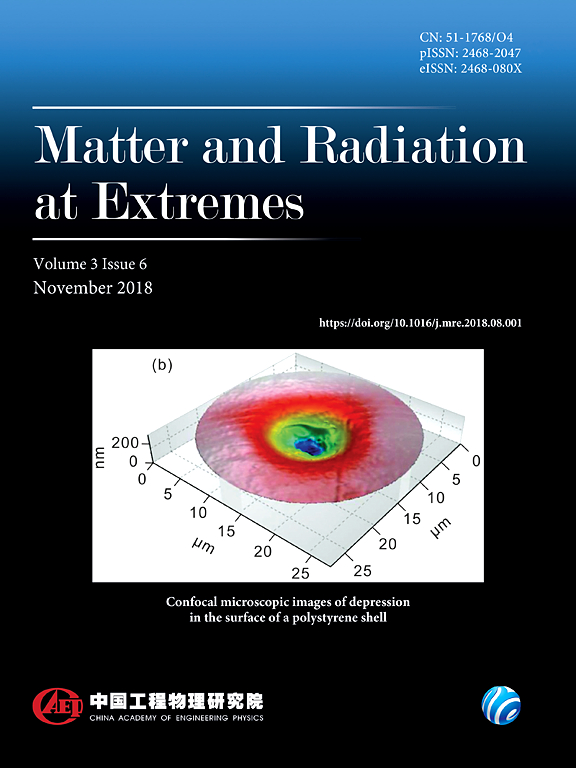主-客体Na-B化合物化学计量学和电子结构的压力诱导演化
IF 4.7
1区 物理与天体物理
Q1 PHYSICS, MULTIDISCIPLINARY
引用次数: 0
摘要
材料中的超离子和电子行为可以诱导离子和电子的各种奇异物理性质,在基础研究和实际应用中都具有重要意义。然而,它们在高温碱金属硼化物中的共存尚未被观察到。在这项工作中,我们应用第一性原理结构搜索计算来识别8种具有主客体结构的Na - B化合物,这些化合物具有广泛的构建块和与Na/B组成相关的有趣性质。在已知的硼化物中,富na的Na9B是碱金属含量最高的化合物,具有顶点共享和面共享的BNa16多面体。值得注意的是,在200gpa和2000k下,它表现出电化物的特性,并转变为超电子电化物,由于间隙阴离子电子的调制而表现出不同寻常的Na原子扩散行为。它在固态表现出半导体行为,在超离子和液体区域表现出与Na 3p/3s态相关的金属性质。另一方面,富含B的NaB7,由一个独特的共价B框架组成,预计在55 GPa下表现出低频声子介导的超导性,Tc为16.8 K。我们的工作促进了对碱金属硼化物的结构和性质的认识。本文章由计算机程序翻译,如有差异,请以英文原文为准。
Pressure-induced evolution of stoichiometries and electronic structures of host–guest Na–B compounds
Superionic and electride behaviors in materials, which induce a variety of exotic physical properties of ions and electrons, are of great importance both in fundamental research and for practical applications. However, their coexistence in hot alkali-metal borides has not been observed. In this work, we apply first-principles structure search calculations to identify eight Na–B compounds with host–guest structures, which exhibit a wide range of building blocks and interesting properties linked to the Na/B composition. Among the known borides, Na-rich Na9B stands out as the composition with the highest alkali-metal content, featuring vertex- and face-sharing BNa16 polyhedra. Notably, it exhibits electride characteristics and transforms into a superionic electride at 200 GPa and 2000 K, displaying unusual Na atomic diffusion behavior attributed to the modulation of the interstitial anion electrons. It demonstrates semiconductor behavior in the solid state, and metallic properties associated with Na 3p/3s states in the superionic and liquid regions. On the other hand, B-rich NaB7, consisting of a unique covalent B framework, is predicted to exhibit low-frequency phonon-mediated superconductivity with a Tc of 16.8 K at 55 GPa. Our work advances the understanding of the structures and properties of alkali-metal borides.
求助全文
通过发布文献求助,成功后即可免费获取论文全文。
去求助
来源期刊

Matter and Radiation at Extremes
Physics and Astronomy-Atomic and Molecular Physics, and Optics
CiteScore
8.60
自引率
9.80%
发文量
160
审稿时长
15 weeks
期刊介绍:
Matter and Radiation at Extremes (MRE), is committed to the publication of original and impactful research and review papers that address extreme states of matter and radiation, and the associated science and technology that are employed to produce and diagnose these conditions in the laboratory. Drivers, targets and diagnostics are included along with related numerical simulation and computational methods. It aims to provide a peer-reviewed platform for the international physics community and promote worldwide dissemination of the latest and impactful research in related fields.
 求助内容:
求助内容: 应助结果提醒方式:
应助结果提醒方式:


